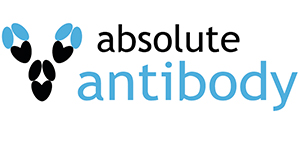Anti-p21 protein (Y13-259)
Anti-p21 protein [Y13-259], Recombinant, IgG1 kappa, Rat
Artikelnummer
ABAAb03219-6.1
Verpackungseinheit
200 μg
Hersteller
Absolute Antibody
Verfügbarkeit:
wird geladen...
Preis wird geladen...
CloneID: Y13-259
Antigen Long Description: The original antibody was generated by immunizing rats with Ha-MuSV-transformed NRK cells. Screening of sera of individual animals was carried out to identify those with the strongest immune response against p21. Spleens were removed from the immunised animals and cell fusion of immune lymphocytes with rat myeloma cell line 210RCY3 Ag 1.2.3 (Y3) was carried out. Supernatants were harvested and assayed for antibodies to p21 by GDP binding assay or immunofluorescence on Ha-SV-transformed MDCK cells, followed by testing for the ability of the antibodies to immunoprecipitate p21.
Buffer Composition: PBS with 0.02% Proclin 300.
Available Custom Conjugation Options: AP, HRP, Fluorescein, APC, PE, Biotin Type A, Biotin Type B, Streptavidin, FluoroProbes 647H, Atto488, APC/Cy7, PE/Cy7
Uniprot Accession No.: P78460; O70564
Specificity Statement: The antibody binds to an epitope common to all p21ras isoforms (Glu63–Arg73), a region known as loop 4. The antibody broadly reacts with ras proteins, including M-Ras and N-Ras.
Application Notes (Clone): The antibody was used in studies of p21ras signaling. The antibody, which recognizes ras p21 proteins specifically blocked the serum-induced mitogenic response of tissue culture cells. When the antibody was coinjected with purified ras protein into NIH 3T3 cells, it neutralized the coinjected ras protein (Mulcahy et al., 1985; PMID: 3918269). HASM, T24, SW480 and SK-N-SH cells were lysed and used for immunoprecipitation. In this procedure the protein was immunoprecipitated using this antibody. When HASM cells were microinjected with the antibody, it significantly inhibited EGF- and thrombin-induced cell proliferation (Ammit at al., 1999). The antibody detected the p21 protein by western blot analysis. Further, peptide competition was carried out to define the binding site of the antibody (Sigal et al., 1986; PMID: 2425352). This antibody was used for immunohistochemistry on human breast tissues (Agnantis et al. 1986).
Antigen Long Description: The original antibody was generated by immunizing rats with Ha-MuSV-transformed NRK cells. Screening of sera of individual animals was carried out to identify those with the strongest immune response against p21. Spleens were removed from the immunised animals and cell fusion of immune lymphocytes with rat myeloma cell line 210RCY3 Ag 1.2.3 (Y3) was carried out. Supernatants were harvested and assayed for antibodies to p21 by GDP binding assay or immunofluorescence on Ha-SV-transformed MDCK cells, followed by testing for the ability of the antibodies to immunoprecipitate p21.
Buffer Composition: PBS with 0.02% Proclin 300.
Available Custom Conjugation Options: AP, HRP, Fluorescein, APC, PE, Biotin Type A, Biotin Type B, Streptavidin, FluoroProbes 647H, Atto488, APC/Cy7, PE/Cy7
Uniprot Accession No.: P78460; O70564
Specificity Statement: The antibody binds to an epitope common to all p21ras isoforms (Glu63–Arg73), a region known as loop 4. The antibody broadly reacts with ras proteins, including M-Ras and N-Ras.
Application Notes (Clone): The antibody was used in studies of p21ras signaling. The antibody, which recognizes ras p21 proteins specifically blocked the serum-induced mitogenic response of tissue culture cells. When the antibody was coinjected with purified ras protein into NIH 3T3 cells, it neutralized the coinjected ras protein (Mulcahy et al., 1985; PMID: 3918269). HASM, T24, SW480 and SK-N-SH cells were lysed and used for immunoprecipitation. In this procedure the protein was immunoprecipitated using this antibody. When HASM cells were microinjected with the antibody, it significantly inhibited EGF- and thrombin-induced cell proliferation (Ammit at al., 1999). The antibody detected the p21 protein by western blot analysis. Further, peptide competition was carried out to define the binding site of the antibody (Sigal et al., 1986; PMID: 2425352). This antibody was used for immunohistochemistry on human breast tissues (Agnantis et al. 1986).
| Artikelnummer | ABAAb03219-6.1 |
|---|---|
| Hersteller | Absolute Antibody |
| Hersteller Artikelnummer | Ab03219-6.1 |
| Verpackungseinheit | 200 μg |
| Mengeneinheit | STK |
| Reaktivität | Human, Mouse (Murine), Rat (Rattus) |
| Klonalität | Recombinant |
| Methode | Immunoprecipitation, Western Blotting, Immunohistochemistry, Neutralization |
| Isotyp | IgG1 kappa |
| Wirt | Rat |
| Produktinformation (PDF) | Download |
| MSDS (PDF) | Download |

 English
English







